Imagine stepping into the realm of an ancient Roman god, one who was there at the very beginning of time and who held the power to oversee both the past and the future. This intriguing deity, Janus, played a significant role in Roman mythology and has left a lasting legacy on our modern world. In this blog post, we delve into the fascinating history and cultural significance of Janus, the god of beginnings, endings, and transitions, as we unveil the secrets behind his dual-faced visage and explore his impact on everything from art and architecture to language and symbolism.
Short Summary
- Discover the history and significance of Janus, a unique figure in Roman culture.
- Explore his dual nature as guardian of transitions, doorways and time.
- Understand how modern society still celebrates this god through language, symbolism & numismatics.
Discovering the Roman God Janus

In the vast pantheon of Roman gods, Janus stands out as a unique figure. This ancient deity’s veneration dates back to the era of Romulus and even before the founding of Rome. As the god of beginnings, transitions, doorways, endings, and time, Janus held a special place in Roman history and was often considered the first ruler of Latium in the mythical golden age. The name Janus has an etymological origin in the Latin word ‘ianua’ which means ‘door’. Ianus is the Latin version of Janus. It was believed that Janus acted as the gateway to the other gods. If a worshipper could win his favor, they would have access to the other deities. However, if someone displeased Janus, the divine gateway was completely closed off to them.
The cult statue of Janus portrayed the god bearded with two heads, holding a staff in his right hand and a key in his left. This striking image was also depicted on Roman coins, symbolizing Janus’s role as the custodian of the heavens and the guardian of beginnings, transitions, doorways, endings, and time. Janus’ unique standing in the Roman pantheon, combined with his intriguing dual nature, makes exploring his history and significance a captivating journey.
The Origins of Janus
Tracing the origins of Janus takes us back to the early days of Roman mythology. Ancient Romans believed that household spirits inhabited everything around them, including people, and were generally benevolent but could be provoked if neglected. It is in this context that Janus emerged as a deity associated with:
- beginnings
- transitions
- doorways
- endings
- time
His prominence in Roman culture eventually led him to be included in the Capitoline triad, alongside Jupiter, Juno, and Minerva, the three most prominent deities in the Roman pantheon.
The legendary second king of Rome, Numa, is said to have founded the shrine to Janus Geminus in the Roman Forum, close to the Senate House. This shrine was dedicated to Janus, symbolizing protection for travelers crossing the river, and marked a significant development in the evolution of Janus as a deity and his growing importance in the Roman pantheon, as well as in the context of Roman myth.
Janus and the Roman Pantheon
Janus held a special position in the Roman pantheon due to his role as the doorkeeper to the heavens, providing access to all other gods and goddesses. He was regularly invoked in supplications and offerings to other gods, signifying his essential role as an intermediary between gods and mortals. Interestingly, Janus is absent from the Greek pantheon, which can be attributed to the fact that he was a uniquely Roman god and was not adopted by the Greeks.
The original sanctuary of Janus was situated on the Janiculum Hill, a location where Janus stood, not only highlighting his significance in Roman worship but also providing a symbolic connection to his role as the guardian of thresholds, gates, and doors.
As we delve deeper into the fascinating history of Janus, we will uncover the many layers of his dual nature and his lasting impact on both ancient and modern cultures.
The Dual Nature of Janus

The two faces of Janus have long captured the imaginations of scholars and enthusiasts alike. Signifying the transition from one state of being to another, they illustrate his capacity to view both sides and his position as a guardian of transitions. This dual nature is further emphasized by his association with doorways, and many ceremonial gateways, or jani, were constructed in Rome for symbolically propitious entrances or exits. Janus represents the duality of time, the passage from one year to the next, and the opening and closing of doors.
This dualality extended beyond the physical realm, as Janus was also believed to be the guardian of heaven’s gates, with the power to open and close the gates of the underworld. As the god of beginnings and endings, Janus was revered at the commencement and conclusion of military campaigns, believed to have the power to keep war at bay and to be the ultimate arbiter of whether peace or strife reigned.
The Symbolism of Keys and Staffs
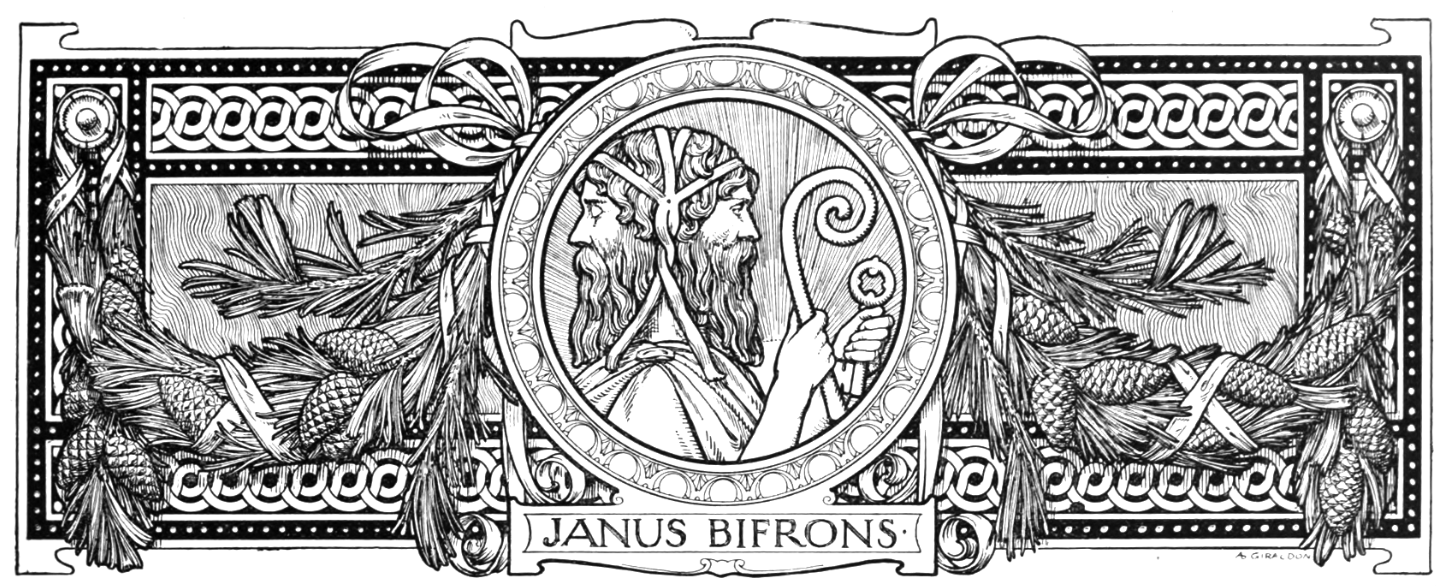
The symbols of keys and staffs are closely associated with Janus, as they represent his role in protecting the start of all activities and inaugurating the seasons. The key in his right hand signifies his role in safeguarding doors, gates, thresholds, and other divisions between spatial boundaries, while the staff, or virga, is a symbol of his authority and power. In ancient Rome, the symbol of the key indicated that a traveler had arrived to seek refuge or trade goods in a peaceful manner.
These symbols not only emphasize Janus’s role as the guardian of doorways and transitions, but also underscore his connection to boundaries and access to other realms. As the god of beginnings and endings, Janus’ symbols serve as a reminder of the importance of transitions in our lives and the possibility for transformation and change.
Janus’s Role in Human Life
Janus’s influence extends beyond the realm of gods and into the lives of humans, as he was renowned as the instigator of human life, transitions between stages of life, and changes from one historical era to another. Ancient Romans held the belief that Janus presided over life events such as weddings, births, and deaths, and he was also responsible for overseeing seasonal events such as planting, harvests, seasonal changes, and the new year.
As a guardian of time, Janus is frequently depicted with two faces, one gazing towards the past and the other to the future, symbolizing his ability to perceive both the commencement and the conclusion. This unique perspective allows Janus to guide individuals through significant life transitions, such as birth, marriage, and death, as well as to provide protection and guidance during times of change and uncertainty.
Sacred Sites and Shrines of Janus
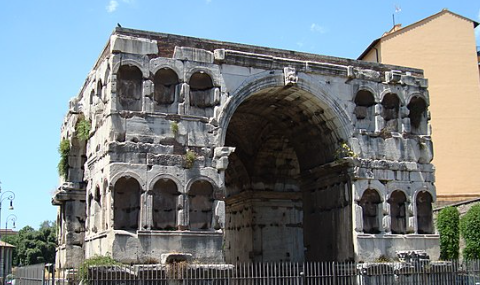
The reverence for Janus in ancient Rome can be seen in the numerous sacred sites and shrines dedicated to him. These locations were of great importance in Roman worship, and they provided a space for people to come and pay homage to the god of beginnings, endings, and transitions. Among the most famous examples are the Temple of Janus in the Roman Forum, the Janus Geminus shrine near river crossings, and the Janus shrine on the Janiculum hill.
Each of these sacred sites holds a unique significance in the worship of Janus, and their enduring presence in the landscape of Rome serves as a testament to the lasting impact of this enigmatic god on the people who revered him. In the following sections, we will explore the architectural and religious significance of these shrines, delving deeper into the fascinating history of Janus and his role in Roman culture.
The Janus Geminus
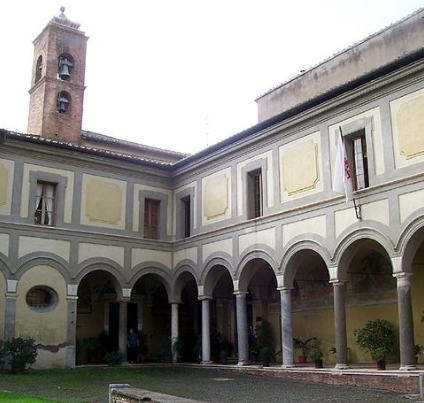
The Janus Geminus shrine, composed of bronze and featuring double doors on either side, with the cult statue located in between, was an important site for the worship of Janus in ancient Rome. Tradition states that the doors of the shrine would be open during times of war and shut during times of peace. The doors of the Janus Geminus shrine were closed during the reigns of Augustus, Nero, and Vespasian, symbolizing the peace and prosperity achieved during their rule.
It is said that Emperor Augustus closed the doors of the Janus Geminus shrine in 26 BCE, during Rome’s war in Spain, with the reopening taking place upon the army’s successful return seven years later. This ceremonial closing of the shrine’s doors highlights the importance of Janus in Roman culture and his role as the ultimate arbiter of peace and war.
The Janiculum Hill Sanctuary
Perched atop the Janiculum Hill in Rome, the Janiculum Hill Sanctuary is an iconic landmark that offers a large park area with walking paths, scenic overlooks, and monuments dedicated to those who fought for Rome. The sanctuary houses a partially gilded statue of Bacchus, as well as an altar with eggs and a bronze artifact. This significant location in Roman worship connects the Janiculum Hill Sanctuary with Janus, the god of thresholds, gates, and doors.
The Janiculum Hill Sanctuary provided a space for Romans to revere Janus and seek his protection and guidance during times of change and uncertainty. Today, the sanctuary stands as a testament to the lasting influence of Janus on Roman culture and his continued relevance in our modern world.
Janus in Roman Culture and Celebrations
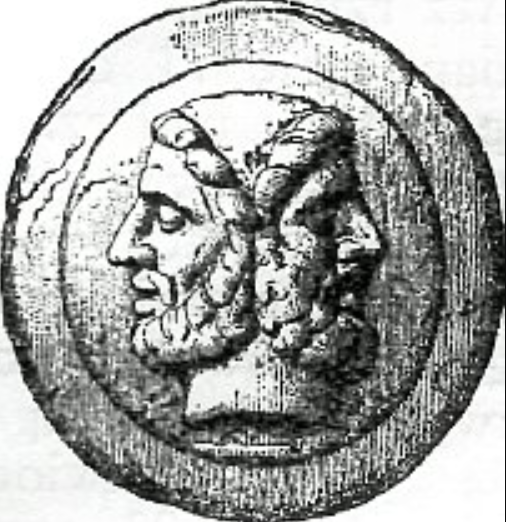
Janus’s presence in Roman culture extended beyond his role as a deity and into various aspects of everyday life, from the calendar to public ceremonies and rituals. The month of January, for example, was named in homage to Janus, signifying his association with the beginning of the new year and the start of a new era. Janus was also a prominent figure in Roman public ceremonies and rituals, regularly being invoked in prayers and sacrifices. His shrines were frequently visited by those seeking protection and guidance, highlighting his importance as an intermediary between gods and mortals.
Roman New Year’s celebrations were closely tied to Janus, the god who opened the door to the new year. To commemorate the New Year, the Romans gave gifts of dates, figs, and honey due to their sweetness, as it was believed to impart a pleasant taste to the year ahead. These traditions and celebrations demonstrate the enduring impact of Janus on Roman culture and his continued influence in our modern world.
The Month of January
The month of January holds a special connection to Janus, as it derives its name from the Roman god of beginnings and transitions. Traditionally, January marked the date on which the year’s consuls assumed office, and Janus supervised the commencement of the political year rather than the calendar year. This changed with the reorganization of the calendar under Caesar, with January supplanting March as the official initial month of the year, rendering Janus the god of the New Year.
The significance of January as the first month of the year highlights the importance of Janus in Roman culture and his association with new beginnings. It serves as a reminder of the transformative power of transitions and the possibilities for change and growth that come with the start of a new year.
Public Sacrifices and Ceremonies
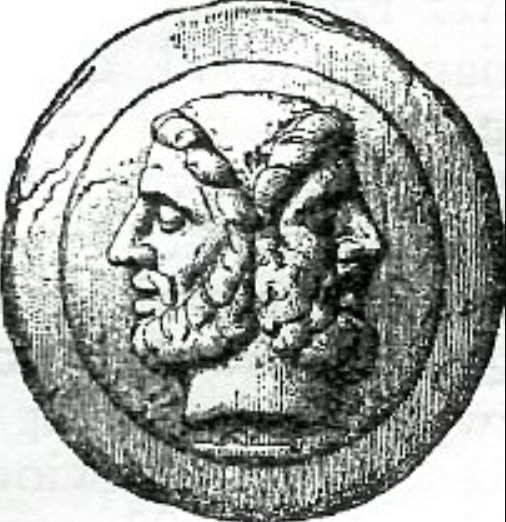
In Roman public ceremonies and rituals, Janus played a vital role, taking incense and wine before any other god. As an intermediary between gods and mortals, Janus was essential in all Roman public sacrifices, and his shrines were regularly visited by those seeking protection and guidance. Furthermore, in Roman New Year’s festivities, Janus was of great importance. Romans would deliver New Year’s gifts of:
- dates
- figs
- honey
- coins
To their peers, and present a traditional barley cake to Janus.
One particularly interesting example of Janus’ influence on Roman public sacrifices is found in the writings of Cato the Elder, who states that Janus was one of the deities to whom offerings were made in the pre-harvest sacrifice in order to guarantee a successful crop. This further underscores the importance of Janus in Roman culture and his enduring impact on the lives of those who revere him.
Legacy of Janus in Modern Times
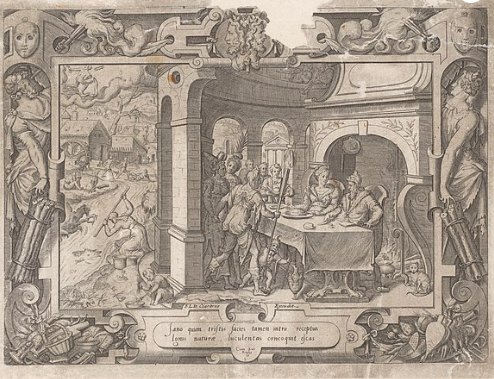
The influence of Janus extends beyond the realm of ancient Rome and can still be felt in our modern world. From art and architecture to language and symbolism, the legacy of Janus endures in many aspects of contemporary culture. Some examples include:
- His dual-faced visage, which has been depicted in various artworks and sculptures
- The use of the term “Janus-faced” to describe someone who is two-faced or deceitful
- The concept of new beginnings and transitions, which is often associated with Janus
- The use of the month of January, named after Janus, as a time for reflection and setting goals
Janus Henderson, with their team of skilled portfolio managers, continues to captivate our imaginations and serve as a reminder of the transformative power of change.
In the following sections, we will explore the lasting impact of Janus on modern culture, highlighting his presence in art and architecture, coinage, and the customs and traditions surrounding doorways, transitions, and life changes.
Janus Coins and Numismatics
Janus’s image has endured through the ages, and his presence can be found on coins from both ancient Rome and modern times. His image on these Roman coins symbolizes the passage from one year to the next and the beginning of a new era. Numismatics, the scholarly pursuit or collection of coins and currency, often features Janus coins as a testament to his lasting impact on coinage and his continued relevance in the financial world.
In addition to his presence on ancient Roman coins, Janus’ image is also featured on modern currency, including the euro and US dollar. The continued use of Janus’s image on modern currency serves as a reminder of his lasting influence and his symbolic connection to beginnings, endings, and transitions.
Doorway Traditions and Transitions
The influence of Janus can also be found in modern religious and non-religious practices surrounding doorways, transitions, and life changes. The English word “janitor,” for example, is derived from the Latin “ianitor,” which translates to “doorkeeper” or “porter,” a reference to Janus’s role as the guardian of doorways. His association with doorways, transitions, and life changes continues to resonate in our modern world, serving as a reminder of the transformative power of change and the importance of embracing new beginnings.
From ancient Rome to the present day, the legacy of Janus endures as a symbol of hope, transformation, and the passage of time. Whether it’s through art, architecture, language, or customs, Janus’s influence can still be felt, reminding us of the potential for growth and change that lies within each of us.
Summary
Throughout this exploration of the ancient Roman god Janus, we have uncovered the fascinating history and cultural significance of this enigmatic deity. From his origins in Roman mythology to his dual nature, sacred sites, role in public ceremonies, and lasting impact on our modern world, Janus serves as a powerful symbol of beginnings, endings, and transitions.
As we embrace the transformative power of change and the potential for growth that lies within each of us, let Janus’ legacy serve as a guiding light, illuminating the path forward and reminding us of the importance of embracing new beginnings.
Frequently Asked Questions
What is Janus the god of?
Janus is the god of beginnings, gates, transitions, time, duality, doorways, passages, frames, and endings in Roman mythology. He is usually depicted as having two faces, symbolizing the middle ground between different dualities such as life/death or war/peace.
Why does Janus have two faces?
In ancient Roman myth and religion, Janus is traditionally depicted with two faces to represent his role as the god of physical and emotional gateways, reconciling different perspectives. He is often seen as the guardian of doorways, bridges, and other passages, and is associated with beginnings, endings, and transitions. He is also associated with time, as he is able to look both to the past and the future.
What does it mean to be a Janus?
In Roman mythology, Janus is the god of doorways, gates and all beginnings, represented by two faces looking forward and backward. He symbolizes dualities such as life/death, beginning/end, youth/adulthood, rural/urban, war/peace, and barbarism/civilization.
He embodies deliberate deception and dishonesty.
What does Janus mean in the Bible?
In the Bible, Janus is referred to as the god of doorways, gates, and thresholds, symbolizing beginnings, endings, and transitions. His depiction with two faces represents looking to the future and to the past.
What is the connection between Janus and the month of January?
Janus, the Roman god of beginnings and transitions, is connected to the month of January as it marks the start of the new year and a new era.
The new year is a time of reflection and renewal, and Janus is a reminder of the importance of looking both to the past and the future. He is a symbol of the potential for change and growth that comes with the start of a new year.
